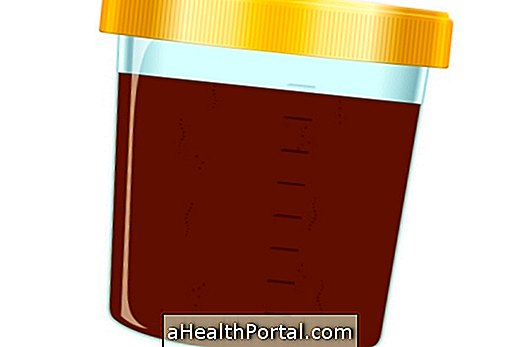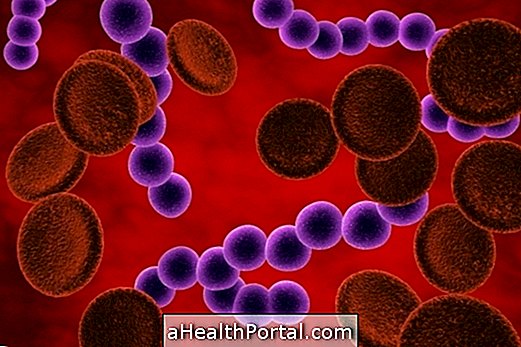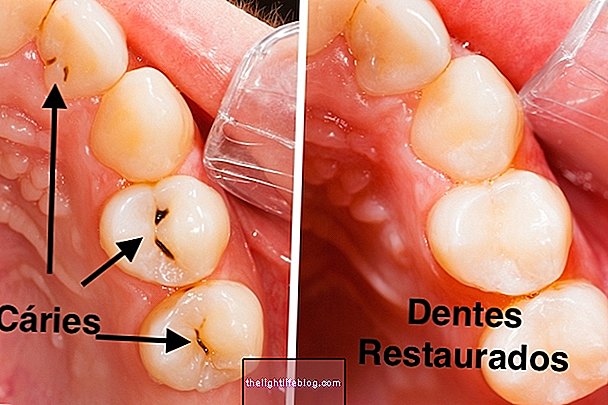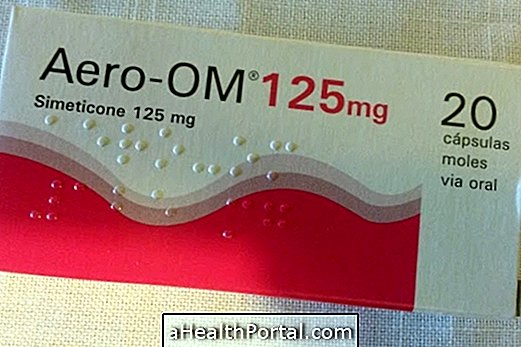The color of the urine may be altered due to the ingestion of certain foods or medicines and therefore, in most cases it is not a warning sign.
However, changing the color may also indicate some health problems, such as urinary tract infection, kidney stone or inflammation of the liver, which may be accompanied by other symptoms such as strong-smelling urine, burning while urinating or abdominal pain, for example. See what may be leaving the urine dark and smelling strong.
What is the normal color of urine?
The normal color of the urine should ideally be yellow or light yellow, so if it is changed for more than 3 days it is recommended to go to the general practitioner to ask for a urinalysis, diagnose the problem and start the appropriate treatment.
Major changes in urine color
The most common changes in urine color are:
1. Dark yellow urine

Dark yellow urine is one of the most common changes and is usually a sign of dehydration due to low water intake. However, when dark urine remains for a long time, it may be a sign of liver problems that cause bilirubin to accumulate, leaving the urine almost brown in color.
What to do: In these cases it is recommended to increase your daily water intake and, if kept for more than 3 days, it is important to consult a general practitioner.
2. Orange urine

Orange urine may arise due to over-eating of foods rich in beta-carotene, such as carrots, papayas or pumpkin, or medicines like Phenazopyridine or Rifampicin. In addition, the orange color can also happen in the case of diseases in the liver and bile ducts.
What to do: Avoid eating foods rich in excess beta-carotene. However, if the change is to continue or if you are being treated with the remedies listed above, it is advisable to consult the general practitioner to start the appropriate treatment. Here's a more complete list of foods you should avoid.
3. Red or pink urine

Red or pink staining is usually caused by the presence of blood in the urine and therefore may be a sign of urinary tract infection, kidney stone or kidney problems, and may be accompanied by other symptoms such as painful urination or fever.
However, the red color can also be caused by the consumption of reddish foods like beets or products with red dye. Learn more about when it really is blood in the urine and what to do.
What to do: If you have eaten red foods you should avoid eating these foods to see if your urine returns to normal. In other cases it is recommended to consult a general practitioner to diagnose the problem and initiate appropriate treatment.
4. Purple Urine

Purple urine is an alteration that only appears in some patients with bladder catheter due to the transformation of some pigments by the bacteria that are in the tube of the probe. Here's how to avoid this change and properly take care of the probe.
What to do: In these cases it is recommended to consult the general practitioner or a urologist because it may be necessary to start treatment with antibiotics.
5. Blue Urine

Blue urine is usually caused by blue dyes or the use of methylene blue contrast widely used in CT scans, liver surgeries, such as ERCP or medicines like Sepurin, for example.
What to do: This is a normal urine change that usually goes away within 24 hours of using contrast.
6. Green Urine

Green urine is not a serious condition, and is mainly caused by eating food, artificial coloring, medications such as Amitriptyline, or by using contrast in some diagnostic tests. Learn more about the causes of green urine.
What to do: Discard too much green food or products that may contain food coloring. However, if the problem persists for more than 2 days, it is advised to go to the general practitioner to identify the problem and initiate appropriate treatment.
7. Brown urine

Brown urine, or very dark urine, is usually a sign of severe dehydration, however, it can also indicate problems in the liver, such as hepatitis or cirrhosis, for example. In addition, some medicines like Methyldopa or Argirol can darken the urine. Check out when dark urine can be severe.
What to do: In these cases it is recommended to increase water intake and, if the change persists, consult a urologist or general practitioner to identify the cause of the problem and initiate appropriate treatment.
8. Whitish urine

Whitish urine, also known as albuminuria, can be caused by the presence of severe urinary tract infection, usually accompanied by urination and fever. In addition, whitish urine may also be caused by a lymphatic fistula that arises especially in cases of neoplasia or abdominal trauma.
What to do: It is advised to consult a general practitioner to do a urinalysis and identify the problem to start the appropriate treatment.























